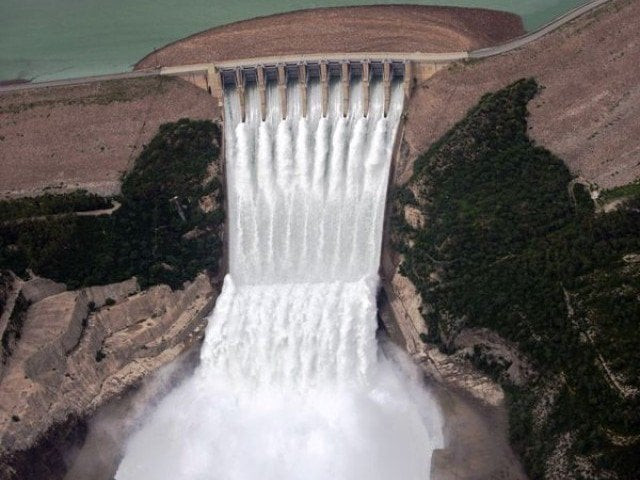Overwhelmed rivers still not on the wane
High flood at Kotri; Tarbela maintains its maximum capacity

The water levels in rivers were still not on the wane on Monday as the country struggled in the face of devastating floods which have claimed over 1,300 lives since June.
According to Water and Power Development Authority (Wapda), the Tarbela Dam has already attained its maximum conversation level of 1550 feet and the power production of the dam also reached 4,888 megawatts with all 17 power generation units working in full swing.
The inflow in Sindh River at Tarbela was recorded at 163700 cusecs and the outflow was 162900 cusecs.
Similarly, the water inflow in the Jhelum River at Mangla was 28,200 cusecs with an outflow of 10,000 cusecs of water.
Kotri upstream discharge was recorded at 603,327 cusecs and 584272 cusecs downstream, recording a rise of 15,560 cusecs in the last 24 hours.
The River Chenab at Marala was receiving around 68800 cusecs of water with an outflow of 38300 cusecs while the inflow at Kabul River at Nowshera was 53700 cusec against the outflow of 53700 cusecs.
The water inflow in Jinnah was recorded at 183700 with an outflow of 175700 cusecs, while the inflow of water in Chashma was 227600 cusecs and an outflow of 29600 cusecs.
The inflow of water in Guddu Barrage was 389500 cusecs and the outflow was 389500 cusecs. Likewise, the inflow of water in Sukkur Barrage was 498900 cusecs and the outflow was 498900 cusecs.
Record monsoon rains and melting glaciers in Pakistan’s northern mountains have brought floods that have killed 1,314 people since June 14, with 24 deaths reported over the past 24 hours, according to the National Disaster Management Authority (NDMA).
It is pertinent to mention that on Sunday the Sindh government finally took the plunge of cutting open a small portion of the Manchhar lake’s bank in a desperate attempt to protect Sehwan and Bhan Saeedabad from flooding, displacing some 125,000 people in five union councils to saving over 300,000 others.
The situation at Manchhar, the largest natural freshwater lake in Pakistan, was becoming critical with each passing day, threatening the lives and assets of the residents of five union councils of Jamshoro district.
The water level had increased amid strong winds. On Sunday, the water level was 120.75 feet in the lake and it was increasing to the dangerous level of 123 feet. The Sindh Irrigation Department said that the cut decreased 30% water pressure in the lake.
The lake was receiving around 40,000 cusecs water from the MNV drain, which channelled the hill torrents from Balochistan. However, only around 25,000 cusecs was released in the Indus river, while 15,000 cusecs had been retained in the lake.



















COMMENTS
Comments are moderated and generally will be posted if they are on-topic and not abusive.
For more information, please see our Comments FAQ